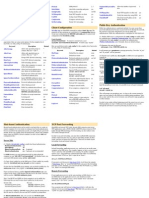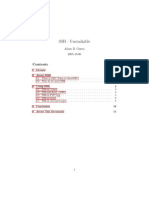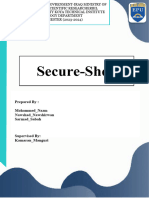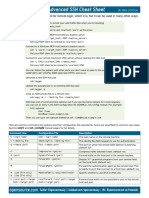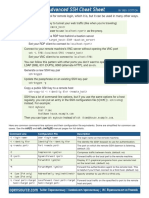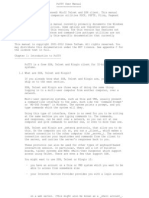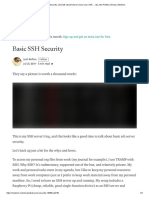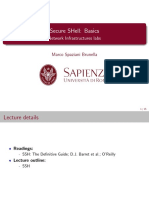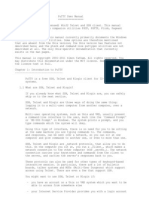0% found this document useful (0 votes)
143 views41 pagesSSH Basics and Security Guide
This document provides an overview of using SSH (Secure Shell) for remote access and administration. It discusses what SSH is, why it is useful, different SSH clients, basic usage including verifying connections and running commands remotely, transferring files with SCP and SFTP, port forwarding with SSH tunnels, and security best practices like using SSH keys instead of passwords. It also covers advanced topics like SSH configurations, shortcuts, speeding up connections, and working around firewalls that block port 22. The document is intended as an introduction and assumes the use of OpenSSH on Linux.
Uploaded by
Mc SalahCopyright
© © All Rights Reserved
We take content rights seriously. If you suspect this is your content, claim it here.
Available Formats
Download as PDF, TXT or read online on Scribd
0% found this document useful (0 votes)
143 views41 pagesSSH Basics and Security Guide
This document provides an overview of using SSH (Secure Shell) for remote access and administration. It discusses what SSH is, why it is useful, different SSH clients, basic usage including verifying connections and running commands remotely, transferring files with SCP and SFTP, port forwarding with SSH tunnels, and security best practices like using SSH keys instead of passwords. It also covers advanced topics like SSH configurations, shortcuts, speeding up connections, and working around firewalls that block port 22. The document is intended as an introduction and assumes the use of OpenSSH on Linux.
Uploaded by
Mc SalahCopyright
© © All Rights Reserved
We take content rights seriously. If you suspect this is your content, claim it here.
Available Formats
Download as PDF, TXT or read online on Scribd
/ 41


